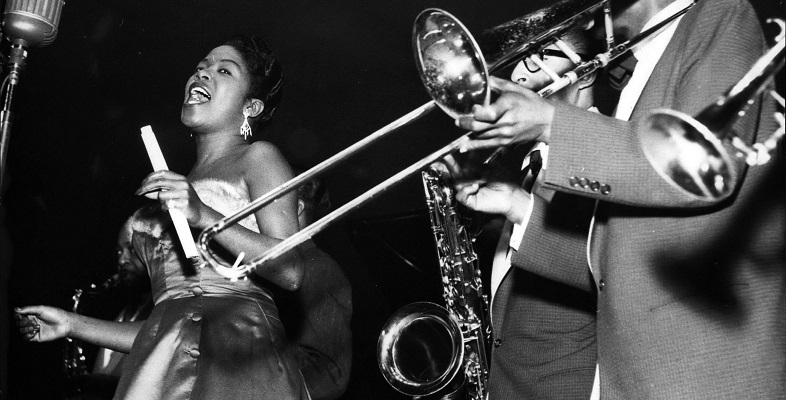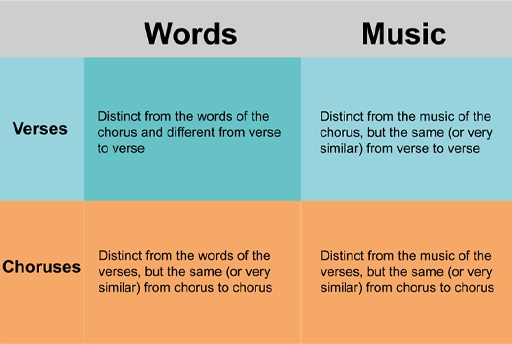1.1 Repetition, contrast and variation
The relationships of repetition and contrast in verse–chorus forms are summarised in Figure 1. Verses and choruses have different melodies from one another, as shown in Figure 1 by the use of different colours. Words change from verse to verse but not from chorus to chorus, which is visually demonstrated by the darker box at the intersection of verses/words.
As Figure 1 suggests, certain kinds of sameness or difference matter more than others when determining the form of a piece of music: in Western pop music, it is often the words and whether these are repeated. Part of getting familiar with music involves learning which similarities and differences help convey a sense of form.
In listening through ‘In My Lonely Room’ a number of times, you may have noticed subtle differences between the melodies of Verse 1 and Verse 2, and especially between the two choruses. In fact, the first and second choruses start the same but end differently (not least because of the fadeout of the second chorus).
This brings us to a third way that music is patterned in time: through variation, or change in how something is repeated. Variation can be understood to exist on a continuum between repetition and contrast, as shown in Figure 2. Variation is a kind of contrasting repetition – what you heard before, but different.


